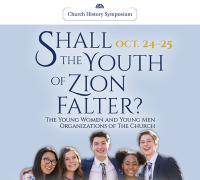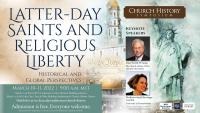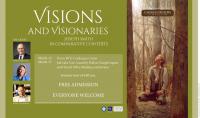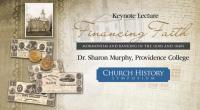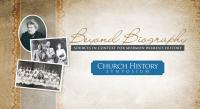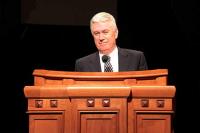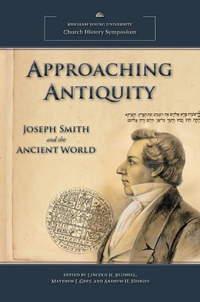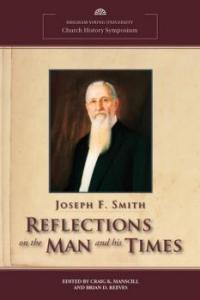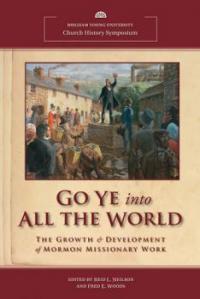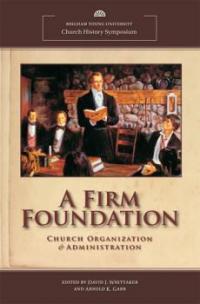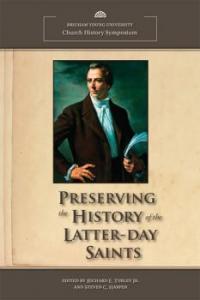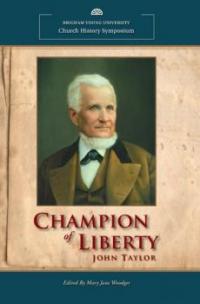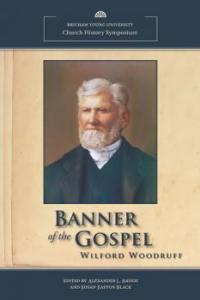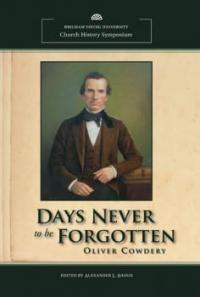Church History Symposium Archive
2024
Shall the Youth of Zion Falter?
The Young Men and Young Women Organizations of the Church
The Church History Symposium will cover the theme “Shall the Youth of Zion Falter: The Young Women and the Young Men Organizations of the Church.” The symposium will convene at Brigham Young University (October 24) and at the Conference Center in Salt Lake City (October 25). Keynote speakers include Young Women General President Emily Belle Freeman, Young Men General President Steven J. Lund, and Dr. Monica Mercado, Professor of Women’s Studies and North American Religions at Colgate University.
2022
Latter-day Saints and Religious Liberty
Historical and Global Perspectives
The Department of Church History and Doctrine at Brigham Young University together with the Church History Department of The Church of Jesus Christ of Latter-day Saints announce the 2022 Church History Symposium to be held March 10–11, 2022. Keynote speakers include Elder Gerrit W. Gong, Quorum of the Twelve Apostles, The Church of Jesus Christ of Latter-day Saints, and Sarah Barringer Gordon, University of Pennsylvania Professor of Constitutional Law and History.
In 1842, Joseph Smith published the Wentworth Letter, which produced the following Articles of Faith:
11. We claim the privilege of worshipping Almighty God according to the dictates of our own conscience, and allow all men the same privilege, let them worship how, where, or what they may.
12. We believe in being subject to kings, presidents, rulers, and magistrates, in obeying, honoring, and sustaining the law.
These statements occasionally stand in contrast to one another: ensuring free exercise of religion while upholding the law. Throughout its history, The Church of Jesus Christ of Latter-day Saints has found itself operating in a wide variety of conditions, some sympathetic to these ideals and others less so. Because of the doctrinal and historical importance of religious freedom, the Latter-day Saint experience can provide a unique perspective on this principle.
2020
Visions and Visionaries
Joseph Smith in Comparative Contexts
The Department of Church History and Doctrine at Brigham Young University and the Church History Department of The Church of Jesus Christ of Latter-day Saints will host the BYU Church History Symposium, March 12–13, 2020. Dr. Steve Harper, a member of the Church History Symposium committee, said they “chose the theme ‘Visions and Visionaries,’ given that this is the 200th anniversary or bicentennial of Joseph Smith’s First Vision.”
The symposium will convene at Brigham Young University (March 12) and at the Assembly Hall at Temple Square, then the Church Office Building auditorium in Salt Lake City (March 13). Speakers include Richard Lyman Bushman, Gouverneur Morris Professor of History emeritus at Columbia University and author of Joseph Smith: Rough Stone Rolling (Alfred A. Knopf, 2005); Sheri Dew, executive vice president of Deseret Management Corporation and former counselor in the Relief Society General Presidency (March 12); and President Dallin H. Oaks, First Counselor in the First Presidency of The Church of Jesus Christ of Latter-day Saints (March 13).
Two sessions of the symposium will be live-streamed. To watch, use the links below:
2018
Financing Faith
The Intersection of Business and Religion
In 1958, Leonard J. Arrington published Great Basin Kingdom, a seminal study in Mormon economic history. Arrington followed this work with several other studies pertaining to the economic history of The Church of Jesus Christ of Latter-day Saints and of the State of Utah. Other scholars have examined in detail financial operations of the church in Ohio, Missouri, and Illinois, including explorations of the law of consecration (first revealed to Joseph Smith in 1831) and its implementation, enterprises such as the United Firm and the Kirtland Safety Society, and the economic impact of creating new communities throughout the Great Basin. Picking up where Arrington and others left off, there are new and exciting developments in the study of sex, society, race, and the environment that can enlighten the financial aspects of Mormon history.
2016
Beyond Biography
Sources in Context for Mormon Women's History
Scholars of Mormon women’s history have long demonstrated a commitment to and an interest in biography. The resulting narratives have helped to recover and preserve voices that would have otherwise been lost to modern awareness and have allowed us to sketch the outlines of Mormon women’s experience over the past two centuries. The 2016 Church History Symposium will build upon past biographical work and push our understanding forward by addressing the following questions: How might we employ archival and other sources to create more complete and complex pictures of Mormon women’s history? How might we consider what individual lives mean within their broader contexts? How will these approaches expand or recast our understanding of Mormon history?
2014
The Worldwide Church
The Global Reach of Mormonism
The 2014 BYU Church History Symposium was held Thursday, March 6, at the BYU Conference Center in Provo and on Friday, March 7, at the LDS Conference Center theater in Salt Lake City. On Thursday, March 6, the keynote address was presented by renowned historian, author, and educator Terryl L. Givens at 7:00 p.m. in the Joseph Smith Building (JSB) auditorium on the BYU campus. The keynote speaker on Friday, March 7, at the Conference Center in Salt Lake City, was President Dieter F. Uchtdorf of the First Presidency of The Church of Jesus Christ of Latter-day Saints.
This conference explored the development, tensions, experiences, manifestations, and ramifications of Mormonism in its expansion beyond the boundaries of the United States. It included analysis on the Church’s worldwide presence in the 21st century as well as historical studies focused on a specific time period from centuries past. This symposium also tackled broad questions about Mormonism’s international growth as well as a narrow geographical/
This conference was jointly sponsored by the Department of Church History and Doctrine at Brigham Young University, The Church History Department of The Church of Jesus Christ of Latter-day Saints, and Conferences and Workshops at BYU.
2013
Approaching Antiquity
Joseph Smith’s Study of the Ancient World
This volume is a collection of essays by prominent LDS scholars–including keynote speakers Richard Bushman and David Holland–that discuss the interest in the ancient world shared by Joseph Smith and the early Latter-day Saints. Topics include Joseph Smith’s fascination with the ancient Americas, his interaction with the Bible, his study of Hebrew and Greek, his reading of Jewish and Christian apocryphal writings, and his work with the Book of Abraham in the context of nineteenth-century Egyptology. Together, these essays demonstrate that Joseph Smith’s interests in antiquity played an important role in his prophetic development as he sought to recover ancient scripture, restore the ancient Church, and bring the Latter-day Saints into fellowship with the sacred past.
2012
President Joseph F. Smith: Reflections on the Man and His Times
This book is a compilation of presentations from a BYU Church History Symposium. It features more than twenty messages about the life of Joseph F. Smith, including chapters by Elder M. Russell Ballard and Joseph Fielding McConkie. Elder Ballard, great-grandson of Joseph F. Smith, describes how the Lord prepared President Smith to lead the Church. Several scholars, historians, educators, and researchers highlight aspects of President Smith’s life, including his boyhood and adolescence, his family and personal relationships, his doctrinal contributions, Church government, and initiatives taken during his presidency in education, building construction, building the Laie Temple, creating the seminary program, and public outreach.
2011
Go Ye into All the World
The Growth and Development of Missionary Work in the Church
This book features the winner of the Mormon History Association's Best International Article Award, Ronald E. Bartholomew's essay “The Role of Local Missionaries in Nineteenth-Century England.” Just as the risen Christ charged his Apostles, “Go ye into all the world, and preach the gospel to every creature,” he also charged his latter-day followers to do likewise. Using the Prophet Joseph Smith as his instrument, the Lord created his missionary system early in the Restoration. The Prophet received many revelations regarding missionary work and its urgency. Over the years, policies and procedures of missionary work have varied and grown a great deal, but it is always done under the direction of the Lord. The missionary system today is founded on principles based on revelation. The Church has used every righteous means available to take the gospel to the world, and the ways and means continue to expand. The outreach of the Church through missionary work is nothing short of amazing. This volume focuses on the growth and development of Mormon missionary work since the early days of the Restoration.
2010
A Firm Foundation
The History of Church Organization and Administration
How did a church that started with just six official members blossom into a global organization of over fourteen million members? Authors such as Richard L. Bushman, John W. Welch, and Susan Easton Black show how Joseph Smith, Brigham Young, and other leaders established the foundation upon which the Church was built. According to Welch, the Book of Mormon provides the foundational administrative principles of the restored gospel of Jesus Christ, “not only its doctrines and instructions for personal living but also its many administrative guidelines.” He went on to say, “The administrative character and personality of The Church of Jesus Christ of Latter-day Saints has indeed grown directly from the genetic material found in the Book of Mormon.” This book teaches how the individuals throughout Church history were inspired to restore and establish Christ’s Church in the latter days.
2009
Preserving the History of the Latter-day Saints
The pattern of keeping records dates back to the earliest days of the church, when Joseph Smith, the church’s founding prophet, announced the divine decree, “Behold, there shall be a record kept among you” (D&C 21:1). Leaders of the church have strived to obey that command. Contemporaneous records were kept of revelations received by the prophet, the calling and interaction of early leaders, missionary assignments, the building of temples, and much more.
The Latter-day Saints continue to be a record-keeping people. In fact, there may be no other people on earth of comparable size who have a richer record-keeping tradition than the people nicknamed Mormons. It is a part of the church’s administrative system, reaching from small committees to the church’s general conferences and from new members to the most senior leaders. Because of this tradition, scholars can readily evaluate Latter-day Saint history from a wealth of primary documents.
2008
John Taylor: His Life, Teachings, and Administrations
The road from being an obscure child born in England to a “champion of liberty” in America began with John Taylor’s baptism into The Church of Jesus Christ of Latter-day Saints. From that time until his death, John Taylor was an unflinching and powerful advocate of the truths that had come into his life. His motto became “The kingdom of God or nothing.”
When John Taylor became the leader of the Church, his administration was limited by exile, due to federal prosecution of polygamy. Forced to move from hideout to hideout, he was rarely in a safe enough position to meet with his counselors or to be among general Church membership.
This book is a compilation of presentations from the 2009 annual BYU Church History Symposium in 2009. The purpose of this book is to remember the great legacy of John Taylor and the contributions he made to the Church during his lifetime.
2007
Wilford Woodruff: Missionary, Apostle, Church President
Wilford Woodruff was different from his predecessors and successors in one particular way—he left an incredibly detailed handwritten record, spanning over sixty years, of nearly everything he did and experienced. He is arguably the third most important figure in all of LDS church history after Joseph Smith, who began Mormonism, and Brigham Young, who led the Saints to Utah and supervised the early colonization of the intermountain west.
Through his skillful, inspired leadership and direction, Wilford Woodruff helped bring about accommodation and change, leading the Church into the social, cultural, and religious mainstream of American society.
This book is a compilation of presentations selected from the annual BYU Church History Symposium hosted by BYU Religious Education to honor Wilford Woodruff, to explore his life and the many roles he filled, and to celebrate the two-hundredth anniversary of his birth.
2006
Oliver Cowdery
Besides the Prophet, no one was more involved in the key events of the Restoration or mentioned more often in the Doctrine and Covenants than Oliver Cowdery. He was influential in the highest councils of the Church as well as in the councils of his community. While many are familiar with his contributions to the Restoration, few understand his personality and his deep spirituality.
This book is a compilation of presentations selected from the annual BYU Church History Symposium hosted by BYU Religious Education and explores the life of Oliver Cowdery and the many roles he filled. This symposium was held to honor him and celebrate the two hundredth anniversary of his birth.
